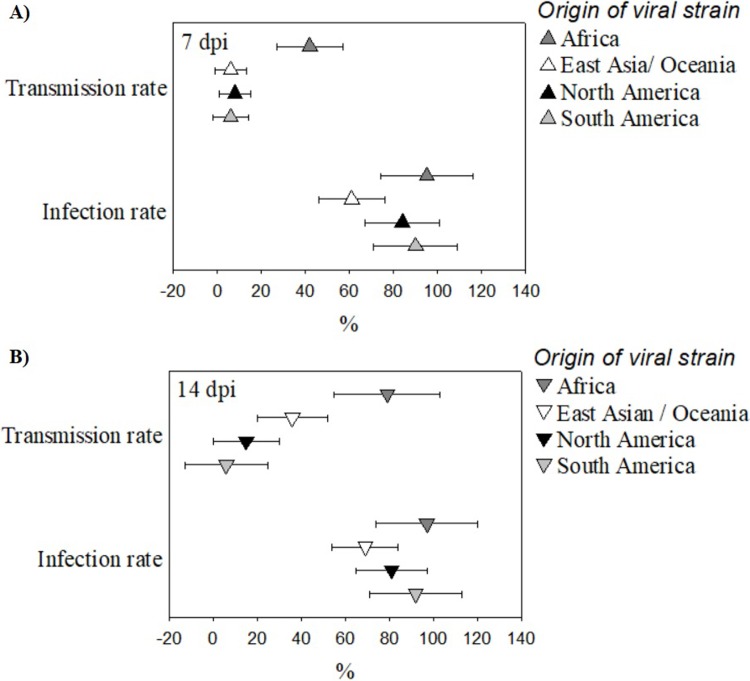Fig 4.
Scatter plot showing mean IR and TR (± 95% CI) of Ae. albopictus infected with geographically separated strains of ZIKV at 7 (A) and 14 (B) dpi. African and South American strains of ZIKV demonstrated significantly higher IRs than other ZIKV strains at both 7 dpi (IRs: African = 0.95, 95% CI = 0.74–1.17; East Asian/ Oceanic = 0.61, 95% CI = 0.46–0.76; North American = 0.84, 95% CI = 0.67–1.01; South American = 0.90, 95% CI = 0.71–1.10) and 14 dpi (IRs: African = 0.97, 95% CI = 0.73–1.2; East Asian/ Oceanic = 0.69, 95% CI = 0.54–0.84; North American = 0.81, 95% CI = 0.66–0.97; South American = 0.92, 95% CI = 0.72–1.13). African strains of ZIKV also demonstrated the highest TRs at 7 dpi (TRs: African = 0.42, 95% CI = 0.26–0.57; East Asian/ Oceanic = 0.06, 95% CI = -0.01–0.13; North American = 0.08, 95% CI = 0.01–0.14; South American = 0.06, 95% CI = -0.02–0.13) while African and East Asian/ Oceanic strains of ZIKV demonstrated the highest TRs at 14 dpi (TRs: African = 0.79, 95% CI = 0.56–1.03; East Asian/ Oceanic = 0.36, 95% CI = 0.20–0.52; North American = 0.15, 95% CI = 0.01–0.30; South American = 0.06, 95% CI = -0.13–0.25).

